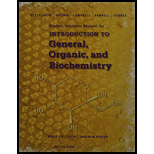
(a)
Interpretation:
The structural formula for the principal organic product formed when Butanal is reacted with.
Tollen’s reagent should be drawn.
Concept Introduction:
Tollen’s regent is reacts with the

Butanal is an aldehyde. The structure of Butanal is as follows.
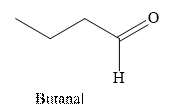
(b)
Interpretation:
The structural formula for the principal organic product formed when Benzaldehyde is reacted with Tollen’s reagent should be drawn.
Concept Introduction:
Tollen’s regent is reacts with the aldehyde group of a compound. The carbonyl group acts as a reducing agent and reduces the silver ion of the Tollen’s regent to silver metal.

Benzaldehyde is an aldehyde. The structure of benzaldehyde is as follows.
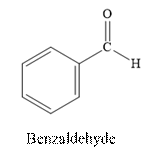
(c)
Interpretation:
The structural formula for the principal organic product formed when cyclohexanone is reacted with Tollen’s reagent should be drawn.
Concept Introduction:
Tollen’s regent is reacts with the aldehyde group of a compound. The carbonyl group acts as a reducing agent and reduces the silver ion of the Tollen’s regent to silver metal.

Cyclohexanone is a
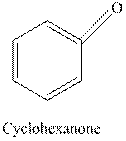
(d)
Interpretation:
The structural formula for the principal organic product formed when cyclohexanol is treated with Tollen’s reagent.
Concept Introduction:
Tollen’s regent is reacts with the aldehyde group of a compound. The carbonyl group acts as a reducing agent and reduces the silver ion of the Tollen’s regent to silver metal.

Cyclohexanol is an alcohol. The structure of cyclohexanol is as follows.
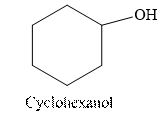
Trending nowThis is a popular solution!

Chapter 17 Solutions
Student Solutions Manual for Bettelheim/Brown/Campbell/Farrell/Torres' Introduction to General, Organic and Biochemistry, 11th
- help 20arrow_forwardProvide the drawing of the unknown structure that corresponds with this data.arrow_forward20.44 The Diels-Alder reaction is not limited to making six-membered rings with only car- bon atoms. Predict the products of the following reactions that produce rings with atoms other than carbon in them. OCCH OCCH H (b) CH C(CH₂)s COOCH མ་ནས་བ (c) N=C H -0.X- (e) H C=N COOCHS + CH2=CHCH₂ →→arrow_forward
- 3) Draw a detailed mechanism and predict the product of the reaction shown? 1) EtMgBr 2) H3O+arrow_forwardHow to draw the mechanism for this reaction?arrow_forward> H₂C=C-CH2-CH3 B. H₂O Pt C. + H2 + H₂O H D. 16. Give the IUPAC name for each of the following: B. Cl Cl c. Cl Cl 17. Draw the line-angle formula for each of the following compounds: 1. phenol 2. 1,3-dichlorobenzene 3. 4-ethyltoluene < Previous Submit Assignment Next ▸arrow_forward
 Introduction to General, Organic and BiochemistryChemistryISBN:9781285869759Author:Frederick A. Bettelheim, William H. Brown, Mary K. Campbell, Shawn O. Farrell, Omar TorresPublisher:Cengage Learning
Introduction to General, Organic and BiochemistryChemistryISBN:9781285869759Author:Frederick A. Bettelheim, William H. Brown, Mary K. Campbell, Shawn O. Farrell, Omar TorresPublisher:Cengage Learning Organic And Biological ChemistryChemistryISBN:9781305081079Author:STOKER, H. Stephen (howard Stephen)Publisher:Cengage Learning,
Organic And Biological ChemistryChemistryISBN:9781305081079Author:STOKER, H. Stephen (howard Stephen)Publisher:Cengage Learning, General, Organic, and Biological ChemistryChemistryISBN:9781285853918Author:H. Stephen StokerPublisher:Cengage Learning
General, Organic, and Biological ChemistryChemistryISBN:9781285853918Author:H. Stephen StokerPublisher:Cengage Learning Chemistry for Today: General, Organic, and Bioche...ChemistryISBN:9781305960060Author:Spencer L. Seager, Michael R. Slabaugh, Maren S. HansenPublisher:Cengage Learning
Chemistry for Today: General, Organic, and Bioche...ChemistryISBN:9781305960060Author:Spencer L. Seager, Michael R. Slabaugh, Maren S. HansenPublisher:Cengage Learning Chemistry: Principles and ReactionsChemistryISBN:9781305079373Author:William L. Masterton, Cecile N. HurleyPublisher:Cengage Learning
Chemistry: Principles and ReactionsChemistryISBN:9781305079373Author:William L. Masterton, Cecile N. HurleyPublisher:Cengage Learning




